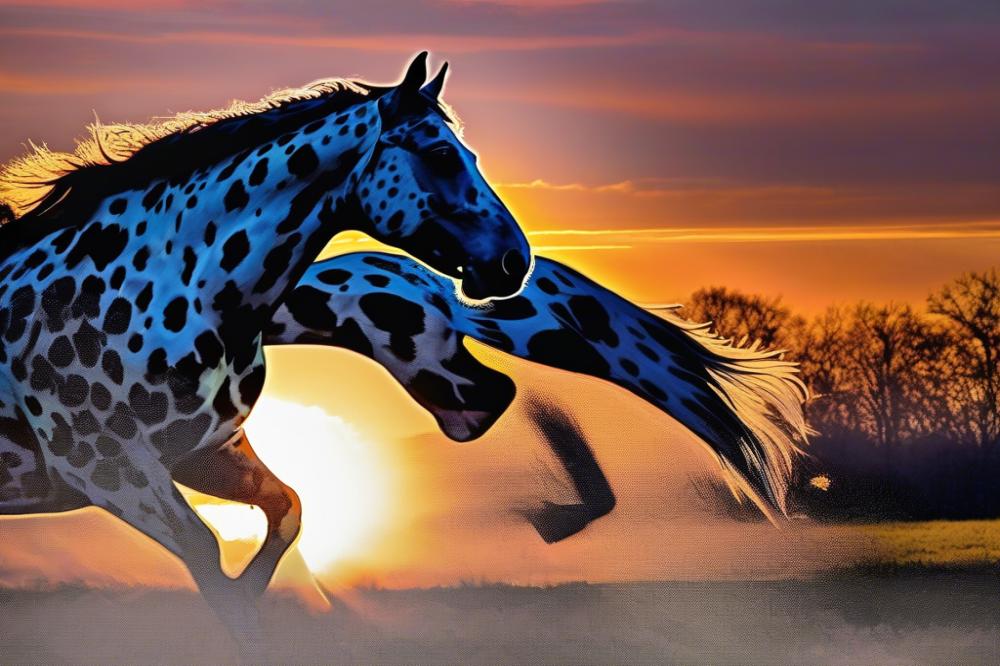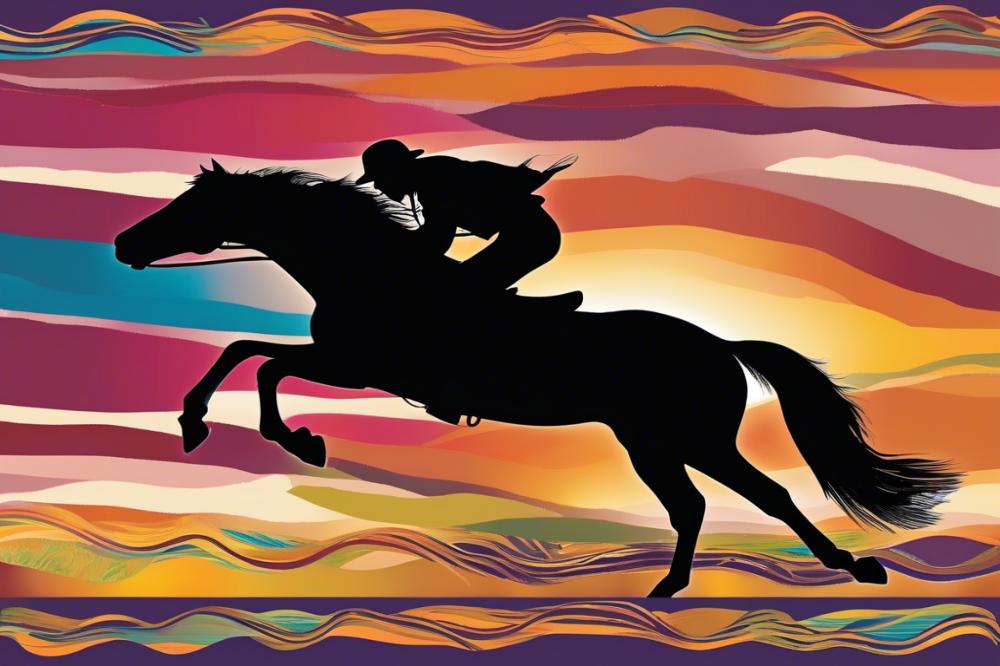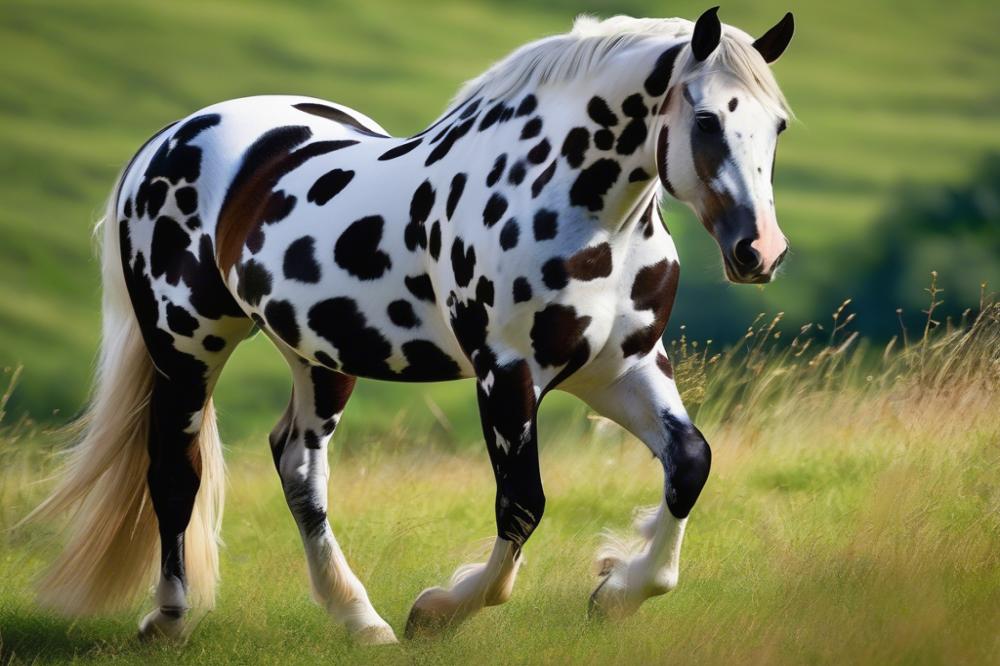Understanding the Appaloosa: A Unique Journey
Recognizing the significance of Appaloosa patterns is crucial for anyone keen on riding these striking horses. The Appaloosa breed is a fascinating blend of history, beauty, and agility. Known for their colorful coat patterns and exceptional temperament, Appaloosas capture the hearts of many equestrians. Their distinctive appearance often sparks curiosity and admiration. Understanding their traits goes beyond looks; it enhances the overall riding experience.
Appaloosas possess remarkable qualities. They are known for their intelligence, versatility, and sensitivity. Many riders appreciate their strong build and endurance. With a rich heritage stemming from Native American culture, these horses have served in various roles, from work to sport. Their unique patterns, which range from spots to mottled textures, make them stand out in any setting. Riders can develop a deeper bond by understanding these characteristics.
This article aims to dive into effective horse riding techniques specifically tailored for these exceptional animals. By exploring methods that complement their unique attributes, riders can improve their communication with their Appaloosa. We will share practical tips to enhance your riding skills and the overall experience. Understanding your horse will lead to more fruitful interactions and a fulfilling journey together.
Appaloosa patterns

Understanding Appaloosa patterns involves appreciating the variety of coat designs that distinguish this breed. Each design contributes to the horse’s identity and can even serve as a conversation starter among horse lovers. These patterns can range widely, showcasing the beauty and individuality of each Appaloosa.
Types of Patterns
Common patterns found in Appaloosas include the leopard, blanket, and roan. The leopard pattern features large spots scattered across the horse’s body. Spot size and placement can differ greatly from one animal to another. A blanket pattern presents a solid color body with a white area over the hindquarters filled with spots.
Roan is another interesting variation, characterized by a mix of colored and white hairs throughout the coat. Unlike the previous two, the roan pattern can blend different colors, creating a stunning appearance. Each pattern type contributes to the horse’s overall look and can offer insights into its genetics.
Importance in Training and Riding
Recognizing these patterns carries significance when it comes to training and riding. Trainers often tailor their approaches based on a horse’s appearance. Horses with distinct markings may require different handling techniques. Additionally, certain patterns could indicate specific traits in temperament or movement.
More than just aesthetics, these visual characteristics may influence how riders bond with their horses. A unique pattern can foster a sense of connection and pride. Knowing your horse’s patterns can even enhance performance in competitions.
Overall, an eye for these details helps riders understand the animal better. It ultimately leads to better communication and cooperation during rides and training sessions.
riding techniques for unique patterns

When learning to ride an Appaloosa, riders often need to adjust their techniques based on the horse’s patterns. Balance plays a crucial role in this process. Each horse has its own way of moving. Understanding how your Appaloosa moves can help you stay in sync with its rhythm.
Coordination is another key factor. It is important to use your body to match the unique style of your horse. For example, a horse with spots may have a lively gait. This type of movement may require you to sit more deeply in the saddle, absorbing the motion while guiding the horse smoothly.
Different types of patterns require different techniques. A solid-colored Appaloosa might be more straightforward to ride. Riders can focus on standard cues and aids. In contrast, a horse with intricate patterns might distract some riders. Keeping your attention on the task at hand is vital for success.
Pay attention to your leg position. With a patterned horse, the legs may need to be slightly more adjusted. This can help maintain balance and improve communication. It’s essential to remember that an Appaloosa may react differently to cues, depending on its markings.
Additionally, practicing various exercises can enhance your riding skills. Try simple transitions with your horse. Move from walk to trot and back again. This helps you learn how to use your body effectively while riding. You will develop a better sense of your horse’s movement and respond more naturally.
Maintaining a light rein is important too. Horses with more elaborate patterns can become easily confused by heavy cues. Keeping the contact soft will promote a relaxed response. Riders should also practice staying centered in the saddle while the horse moves. This leads to a smoother ride overall.
Finally, consider the environment. Patterns may affect how a horse perceives its surroundings. Open spaces can be exciting for one horse while intimidating for another. Being aware of these differences can help riders adjust their technique accordingly. A calm approach often helps these horses feel secure during the ride.
Understanding Breed Characteristics

The Appaloosa breed is known for its striking appearance and distinctive color patterns. These horses often possess a well-defined build that contributes to their performance. Athleticism plays a vital role in riding. Riders appreciate their strength and agility. Many Appaloosas are also well-suited for various disciplines, from western riding to dressage.
Temperament is crucial when it comes to riding these horses. Appaloosas tend to have a calm and friendly demeanor. They are often eager to please their riders. This willingness makes them great companions in the saddle. However, they can also be spirited and playful at times. Understanding these behavioral traits helps riders know what to expect.
Behavioral traits impact how one rides an Appaloosa with different patterns. Riders must be aware that some horses can be more sensitive to commands. Strong communication is essential for a successful partnership. Those unique markings on the coat may even influence how others perceive the horse. This can affect the rider’s experience both in competitions and during practice.
Familiarity with breed characteristics allows riders to adapt their techniques. Every Appaloosa carries its own personality. Patience and consistent training can highlight the best traits in these horses. By focusing on their natural abilities, riders can enjoy a smoother ride. This understanding ultimately enhances the equestrian experience.
Pattern Identification and Its Role in Riding
Recognizing patterns on an Appaloosa is crucial before mounting up. Each horse displays distinctive designs that can greatly affect its behavior. Understanding these markings can give riders valuable insights into their horse’s mood and temperament. This knowledge lays the groundwork for a positive riding experience.
Several techniques exist for assessing the patterns on an Appaloosa. First, spend time observing the horse in a relaxed setting. Look closely at the colors and formations on its coat. Markings may suggest how the horse may react to certain situations. Consider also how these patterns change under different lighting and movements, as shadows can alter perceptions. Pay attention to any areas where the coat may have a different texture or luster. This can indicate health and well-being, which are essential for performance when riding.
Identifying markings supports effective communication between rider and horse. For example, a horse with specific patterns may exhibit nervousness or excitement in response to certain cues. Recognizing these signals allows a rider to adjust their approach, making it more harmonious. Riders can create trust when they respond appropriately to their horse’s behavior. An understanding of patterns fosters a deeper bond, enhancing both riding pleasure and safety.
Training Methods for Appaloosas
Training an Appaloosa with interesting coat designs calls for methods crafted for their specific traits. Horses like these often possess strong personalities. Understanding their unique temperaments is key to effective training. Building a bond with your horse will lay the foundation for success.
Consistency plays a crucial role in shaping behavior. Daily practice makes a significant difference. Horses thrive on routine, so time spent with them should be regular. Patience allows both horse and rider to grow together. Progress might take time, but it is essential to remain calm and supportive.
Specific exercises can improve skills for both you and your horse. Groundwork is beneficial for establishing communication. Simple tasks like leading, lunging, and desensitizing can enhance trust. Riding drills such as circles, transitions, and backing up will help develop balance. Engaging in trail rides is another fun way to work on various skills.
Focus on building your horse’s confidence. Introducing new environments and obstacles gently will help. Overcoming challenges together fosters a strong relationship. Incorporate light obstacle courses or simple jumps as they progress. This not only improves their agility but also keeps training dynamic and interesting.
The use of positive reinforcement is vital. Rewarding desired behaviors will motivate your Appaloosa. Treats, praise, and gentle pats can be effective rewards. Remember, every small step is worth celebrating. It boosts their enthusiasm for learning.
Always make training sessions enjoyable. Mix activities to keep your horse engaged. Variety prevents boredom, which is important for a happy horse. Explore new skills, but do so at a pace that suits both of you. Each session should feel rewarding, reinforcing the connection you’ve built.
Horse Care for Appaloosas
Caring for an Appaloosa goes beyond regular horse care. Each horse has distinct needs based on its coat patterns, colors, and health. Some patterns can make grooming a bit different. It’s wise to recognize how a horse’s skin reacts to dirt and sun exposure, especially in lighter colors. Regular brushing helps remove dirt and debris while also promoting healthy skin. Use a soft brush for sensitive areas. Make sure to brush more rigorously on less sensitive spots.
The colors and patterns can indicate susceptibility to certain skin conditions. Lighter-skinned Appaloosas sometimes need extra attention to protect against sunburn. Applying horse-specific sunscreen can be beneficial for maintaining skin health. Additionally, examine their skin often for any signs of irritation or infections. Address any concerns promptly to prevent further issues.
Nutrition and Health Care Tailored for the Breed
Nutritional needs play a crucial role in the overall health of Appaloosas. Focus on providing a balanced diet rich in fiber and essential nutrients. Quality hay should be a staple in their diet. Adding grains can also benefit their energy levels, especially for active horses. Consult with a vet about supplements that might support their health. Some horses may require specific vitamins or minerals based on their individual needs.
Regular veterinary check-ups are important for all horses, including Appaloosas. Vaccinations and deworming schedules should be strictly followed. Keeping up with dental care is also essential, as it affects their ability to eat and digest food properly. Healthy teeth contribute significantly to a strong nutritional foundation.
Moreover, many owners find that tailoring their horse’s exercise regime helps maintain its fitness level and good health. Appaloosas are known for their versatility. Whether they are used for trail riding or other activities, consider their training and conditioning needs. These routines enhance their physical and mental well-being.
Showing Appaloosas with Unique Patterns
Competing with Appaloosas featuring striking designs involves more than just riding. Judges often assess the horse’s presence and overall impression. Patterns can capture attention, but performance is equally important. Riders must navigate the balance between the two to succeed.
Preparing for competitions requires careful planning. Grooming plays a critical role in showcasing the horse’s colors and patterns. Keeping the coat clean and shiny helps highlight unique features. Regular brushing not only improves appearance but also allows for checking the skin for any issues. Training should focus on building confidence and skills. Riders need to practice maneuvers frequently and work on their timing. A well-prepared horse will perform better under the stress of competition.
Presentation Matters
Effective presentation is essential during shows as well. Riders must wear attire that complements their horse without overshadowing it. Clean tack and careful attention to detail in one’s clothing contribute to an overall polished look. The way a rider moves and carries themselves can influence how the horse is perceived. Maintaining a confident posture also helps in the performance. Calmness during the competition will reflect on the horse, making for a successful show.
Showcasing patterns requires a strategic approach. Riders should learn how to position their horses effectively in the ring. Knowing the strengths of their horse’s design can make a big difference. Highlighting those strengths will make the horse stand out even more. Each moment in the arena counts, and showcasing the horse should be a priority. Thoughtful movements can create memorable visuals for judges and spectators alike.
The Beauty of Riding Appaloosas
Recapping the important points, riding an Appaloosa with unique patterns requires a blend of skill, understanding, and care. Riders should focus on the specific needs of these horses. Each horse is an individual, and its unique characteristics should guide training. Success on these wonderful animals comes from developing a strong bond between rider and horse.
Balancing riding techniques is crucial for performance as well as enjoyment. Riders must practice various skills to create a harmonious experience. Training should always be consistent and positive. Gentle methods often lead to better results than harsh techniques. Care for your Appaloosa should be top of mind too. Proper nutrition, regular exercise, and good grooming are key elements of overall well-being.
Embracing the beauty of these striking patterns adds to the joy of riding. They not only delight the eye but also tell a story about heritage and resilience. Whether you are in the show ring or out on a trail ride, riding an Appaloosa offers a distinctive experience. Each ride can be an adventure, showcasing both the horse’s skills and its mesmerizing coat.
Cherish the journey of learning and growing together. With patience and dedication, a deep connection can blossom. Ultimately, the joy of working with such an expressive breed enriches the world of equestrianism.



